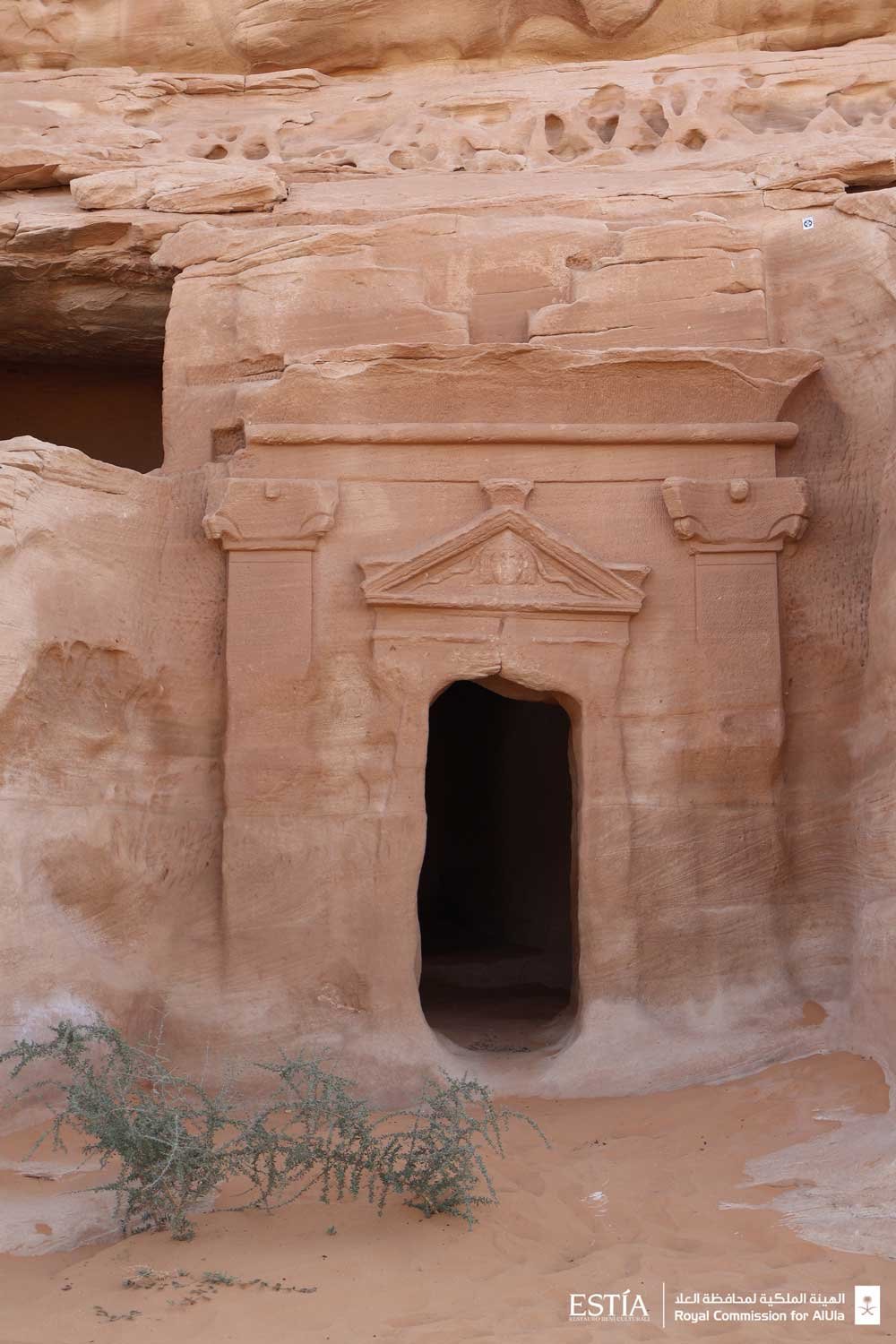
Tomb IGN30, belonging to the Proto-Hegra 1 type, is situated in the Jabal Banat necropolis and faces southwest. The access floor to the interior rooms is 50 cm higher than the current ground level, with the threshold on a base of about 20 cm. The facade shows a stratification and a natural concavity of the massif, limiting its vertical development. The tomb is significantly set back compared to adjacent tombs, with the upper left corner housing the opening of IGN30.1, which connects to the interior chamber of IGN30.
The upper part of the facade features two typical 5-step half-crowsteps, though only 2 steps on the left and 3 on the right are partially visible. These rest on an Egyptian entablature consisting of a cornice with torus molding and an architrave. The inscription on the architrave is engraved directly on the surface, slightly offset to the left, due to the presence of an acroterion in the center of the pediment, preventing the creation of a cartouche.

Les tombeaux nabatéens de Hegra vol. II, Nehmé L., Académie des inscriptions et belles-lettres, Paris 2015, pp. 68-70
The Nabataean Tomb Inscriptions of Mada’In Salih, Healey J.F., Oxford University Press, Oxford 1993, pp. 144, 147
“This is the tomb belonging to Hagaru daughter of Hafi and Mahmiyyat daughter of Wa’ilat for themselves and their children and their descendants. And the share of Hagaru has been allotted to the right five cubits and the share of (Mahmiyyat to the left) five cubits. In the 18th year of King Maliku (King of) the Nabataeans.”